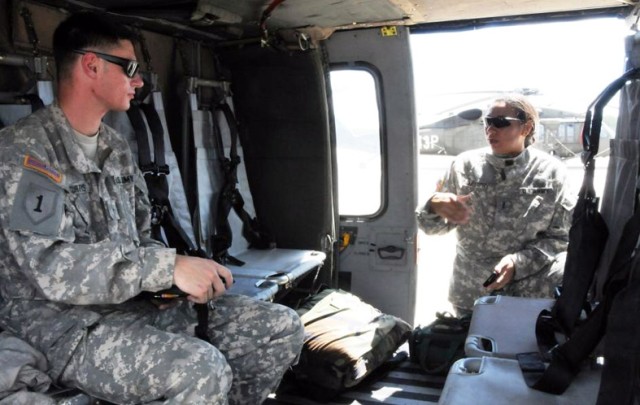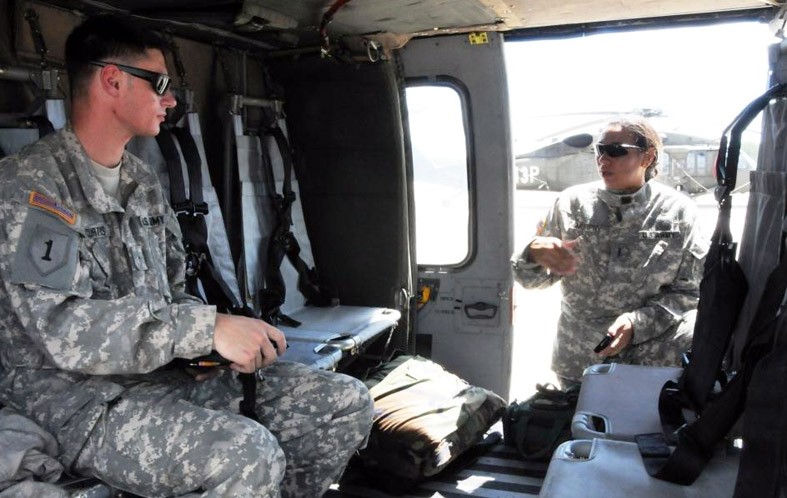FORT RUCKER, Ala. -- In the spring of 2008, Secretary of Defense Robert Gates visited Fort Rucker, the commanding general and his staff.
His message was multifaceted, but one of the key imperatives was that Fort Rucker as the hub of the Aviation Enterprise had to figure out how to train more pilots faster.
"Today, the primary limitation on helicopter capacity is not airframes, but shortages of maintenance crews and pilots," Gates said. "So our focus will be on recruiting and training more Army helicopter crews."
The Army National Guard implemented a program mobilizing Guard instructor pilots after that visit that helped increase pilot training by 46 percent.
By the summer of 2009, the Fort Rucker Deputy Assistant Commandant - National Guard, Col. Mark Weiss - was tasked with developing a program wherein the Army National Guard would provide instructor pilots to serve on two to three year tours as flightline instructors.
By the fall of 2009, CW2 Justin Mack from the Ohio National Guard, was training students. Since the fall of 2009, the program has gained both awareness in the field and true momentum. To date there are 22 Army National Guard instructor pilots serving tours as flightline instructors. The program already has an additional 16 National Guardsmen programmed to begin their tours through the fall of 2011.
Increasing throughput has been a focus of the U.S. Army Aviation Center team. Due to the operations tempo over the past nine years USAACE has found itself with a backlog of flight school students.
"The delays are due to various seen and unforeseen reasons," said Col. Todd Conyers, USAACE, G3. "Aircraft availability based on maintenance, numbers of training aircraft at Fort Rucker, weather, instructor pilot availability, classroom scheduling, and even student availability - to name a few - have impacted or still impact the flow of students through the pipeline. The good news is we're seeing very positive results based on solutions we began applying more than a year ago."
Mobilizing Army National Guard or USAR instructor pilots to improve the throughput of quality aviators directly supports contingency operations overseas by increasing the pool of available aviators and increasing the capacity of the states' to support their domestic operations. Simply stated, training more pilots faster will greatly benefit all components, according to Weiss.
The State Aviation Officers are the quality control for the program to insure that anyone who is accepted into the program is their best and brightest.
The Soldiers are individually mobilized and receive permanent change of station orders. Their packets are first routed through their state chain of command and must ultimately be approved the state Adjutant General.
Once TAG approval is granted, the packet is routed through the Training and Doctrine Command chain of command and final approval rests with the Department of the Army. The process takes between 60 and 90 days from the time the mobilization packet is submitted until the orders are produced.
Though not all states have supported the mission to date, the current pool of instructors is made up from 22 states with a desired endstate of at least one from each state.
The program provides many direct benefits for the National Guard and the Army as a whole. It improves ARNG readiness by expanding the depth and experience of our instructor pilot corps, said Weiss.
Unit readiness increases Armywide by helping to increase the throughput of new Aviators and getting one of the Soldiers back to their formations faster. Every instructor pilot brought to the flightline results in an additional four to six new Army Aviators produced each year.
Precious training dollars are better utilized and the total time it takes to produce an Army Aviator is reduced.
Eliminating the current flight training backlog is one of the USAACE commander's highest priorities. The training delays will not go away quickly, but this initiative exemplifies the concept of "One team: the Aviation Enterprise - active component Aviation partnered with the Army Reserve and Army National Guard teammates."
The multiplicative results will have significant impacts over time and once again the citizen Soldiers will have answered the call of both their states and their nation, Weiss said.
For more information on the instructor pilot initiative, call 470-6653.


Social Sharing